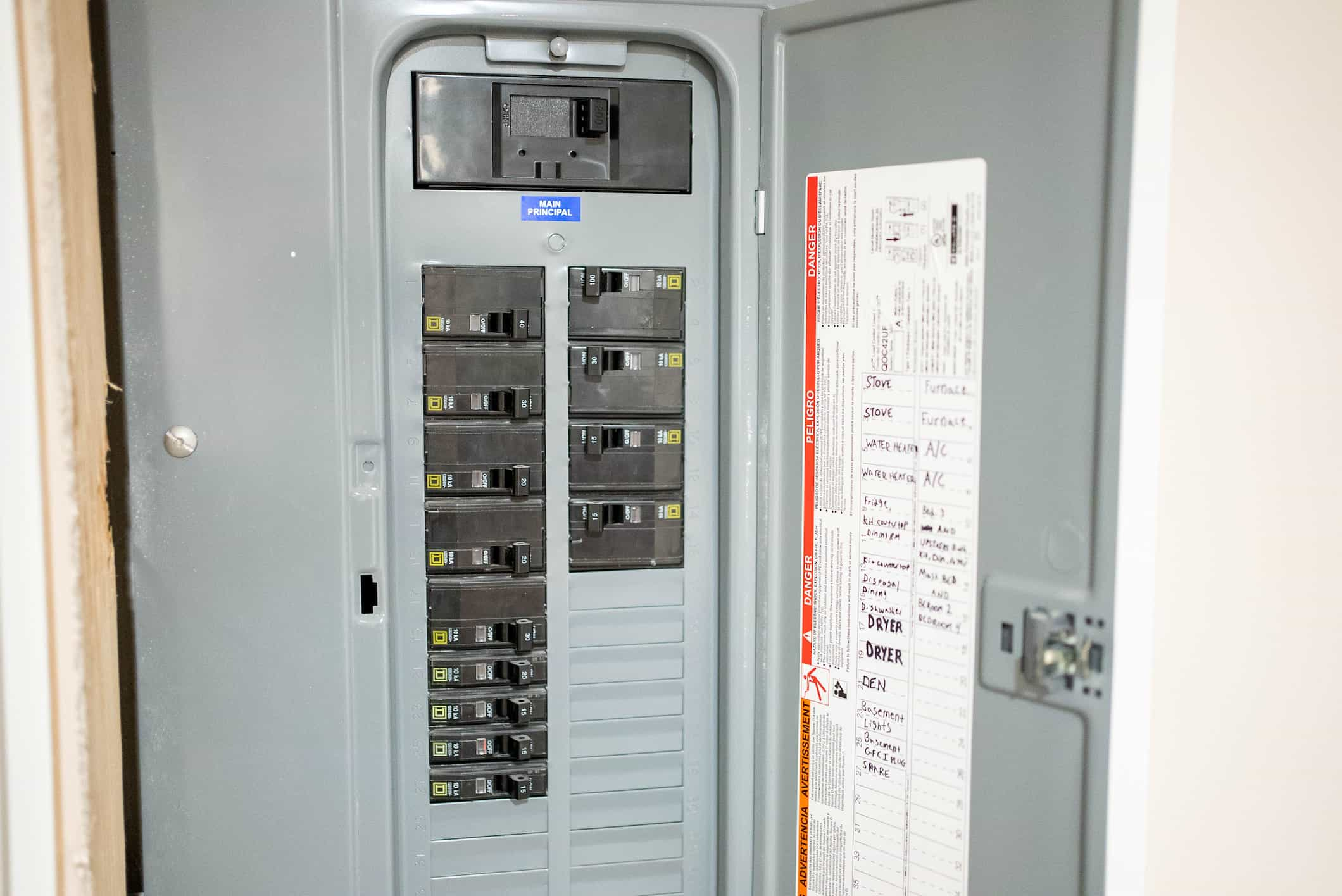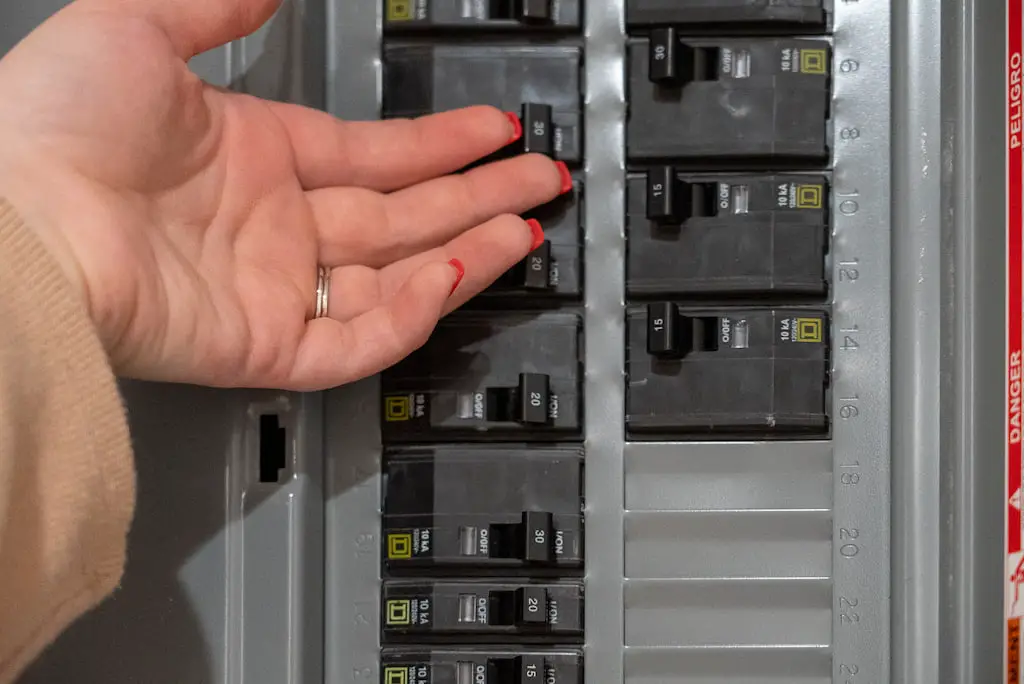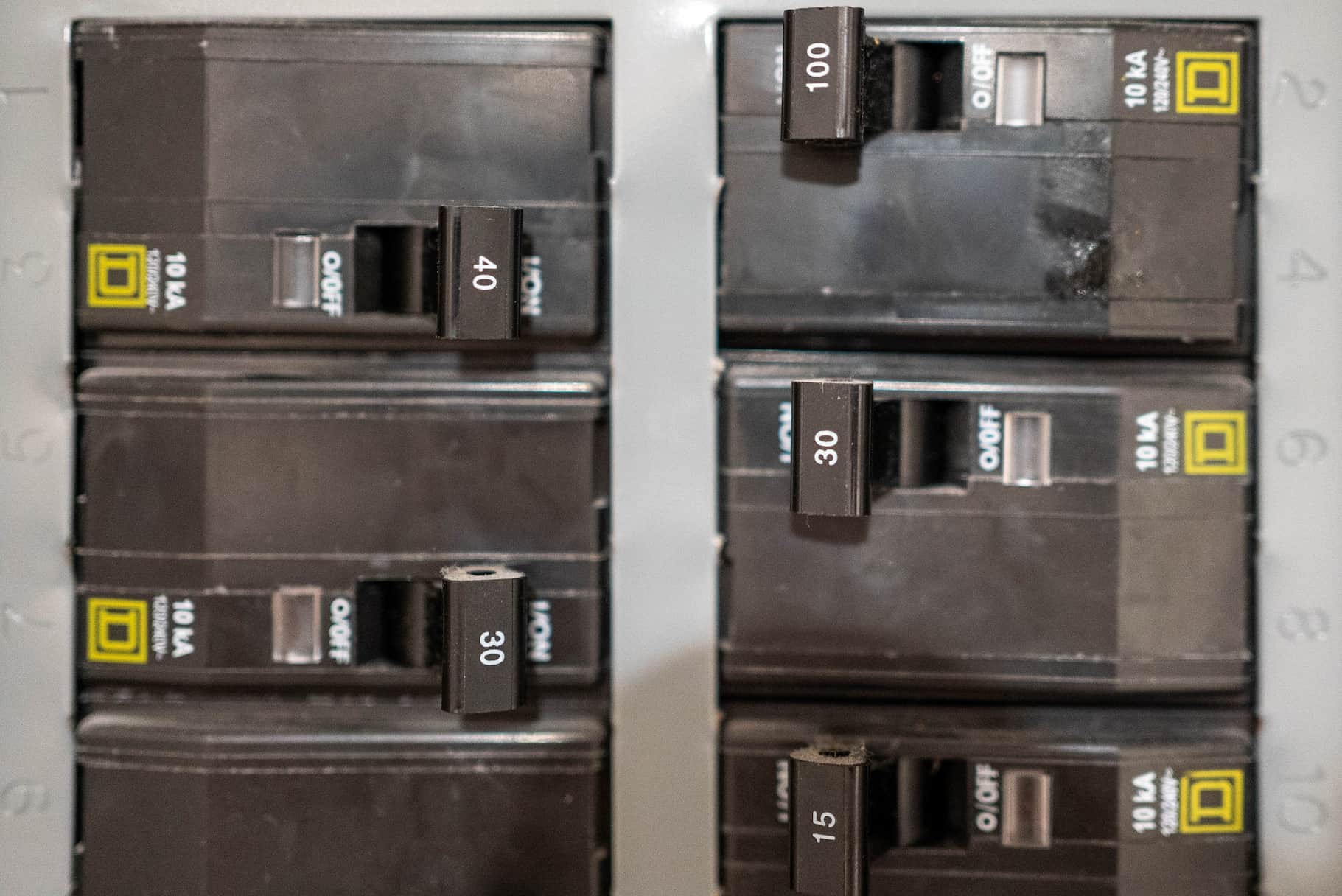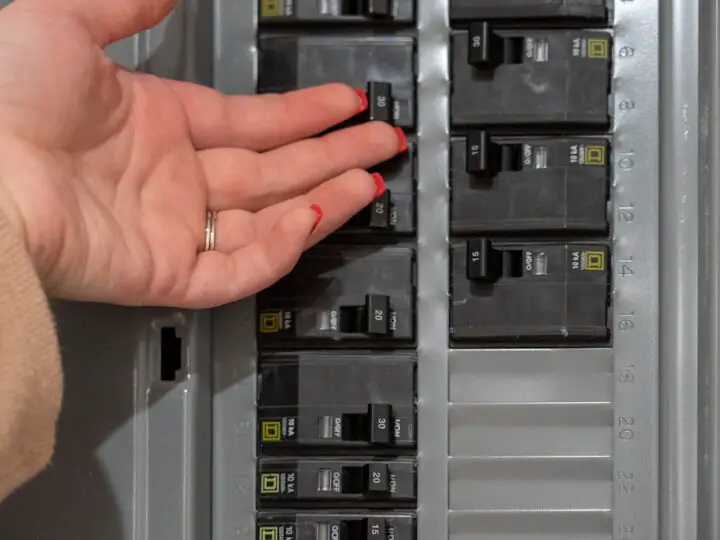Perhaps you tripped a breaker, or you’re installing a new light fixture and need to turn off that circuit to hook it up. Whatever the reason, if you’ve opened up your electrical panel and noticed that one or more of your circuit breakers are warm, that might have caused some concern. Should circuit breakers be warm? How can you tell?
When circuit breakers reach 140F or 60C, the breaker shuts off to prevent fires. It is not normal for a circuit breaker to be hot enough to hurt you when you touch it.
So, is your circuit breaker warm, or hot? How do you check that? Are there troubleshooting steps you can complete yourself? How do you know when it’s time to call a professional electrician? Read on to learn what you need to know about circuit breakers, what an electrical panel does, how to determine if a circuit is warm or hot, and how a licensed electrician will diagnose and fix a hot circuit breaker.

Circuit Breakers: What You Need to Know
The Electrical Panel and Circuits
Electrical panels are your main access point to the power in your home. Your home is connected to the main grid of your city or town through your electrical panel – and as long as you have electrical service, it’s on. (So be careful – electrical panel work is only for the professionals!!!)
Electrical panels also direct power throughout your home by breaking it up into circuits. That’s why you can turn off certain sections of your home, while still keeping others on – and why when one circuit trips, you don’t lose power in your whole house.
The Circuit Breakers
Put very simply, circuit breakers turn off power to a circuit before heat or electricity has a chance to become dangerous, which usually happens when there is an excess of current, a power surge, or some mechanical flaw.
When the electrical current moving through the circuit breaker reaches an unsafe level, or the temperature put off by the circuit is too high (above 140F or 60C), the circuit breaker is tripped and shuts off the circuit before anything bad can happen.
While it’s expected and normal for your breakers to be warm, you should be definitely concerned if they are hot to the touch.

How to Determine if Your Circuit Breaker is Warm or HOT
Determining Temperature With A Tool
It sounds really subjective, doesn’t it? Obviously, the easiest way to tell how hot your circuit breaker is with an instant-read thermometer or thermal imaging camera. Just point it at the breaker and you’ll know exactly how hot it is.
But, if you’re like me, you don’t have one of those lying around.
And if you’re standing in front of your electrical panel trying to figure out whether a circuit breaker is too hot, you don’t want to be running off to the store in search of the right tool, hoping your house doesn’t catch fire before you get back.
So, how can you check if a breaker is warm (normal) or hot (concerning)?
Determining Temperature With The Back Of Your Hand
There’s not really a catchy name for this technique, but if you’ve ever used the back of your hand to check the temperature of bathwater for a child, it’s the same principle.
Place the back of your index finger up against the circuit breaker. Does it feel hot enough to hurt? Then it’s too hot. Is it merely soothingly warm? Nothing to worry about.
Alternatively, you can shut the breaker off (just to be safe) and head to the store for a fancy instant-read thermometer or thermal camera to more accurately gauge the temperature.

Troubleshooting a Hot Circuit Breaker Yourself (JUST DON’T)
If you’re a complete electrical novice and the idea of fiddling with your electrical panel fills you with dread, GOOD!
Call an electrician to take a look at it for you.
There are around 400 fatal electrocutions in US homes each year, according to the National Center for Biotechnology Information. It is no joke.
What An Electrician Will Do To Troubleshoot A Hot Circuit Breaker
Step One: Open Up The Electrical Panel
When your electrician opens your electrical panel, you’ll see a large breaker switch (usually at the top) that’s labeled as the main breaker. Depending on their best practices, your electrician may turn this off before they do anything else.
This turns off all the circuits in your home, so you won’t have power in any of your outlets.
Step Two: Remove The Dead Front Panel
Then, to check on the breaker that is hot, your electrician will need to remove the dead front panel, which is the facing around the breaker switches. They will unscrew each corner and carefully slip the panel off.
Now, you’ll be able to see all the wiring that goes into your electrical panel – pretty cool right? But also incredibly dangerous because now the bus bar is exposed.
Bus bars are the flat metal components found on either side of electrical panels. The circuit breakers snap onto the bus bar, which is what completes each circuit in your home and allows you to have electricity. When circuit breakers trip, they interrupt the connection to the bus bar, which stops the power by making the circuit incomplete.
The bus bar is ALWAYS live, even when the main breaker is off. Only the power company can turn the main bus off by disconnecting your home from the main power grid.
DO NOT TOUCH THE BUS BAR. EVER.
Step Three: Check For Loose Electrical Connections, Firm Connections, and Worn Out Circuits
Once you can see the inner workings of the circuit breaker, your electrician will check that the two screws connecting the wire to the breaker have not become loose. Loose electrical connections create much more resistance, which creates more heat, and could explain why your circuit breaker was hot to the touch.
If that’s not it, your electrician will look closely at your circuit breaker to make sure it’s seated firmly on the bus bar. Both sides should sit evenly, so if one side is protruding a little more than the other, your electrician will (very carefully) give it a firm push onto the bus bar. Well-seated circuit breakers will click when they’re firmly in place.
PS: If you want to learn even more about if circuit breakers should be loose or not, check out this post I wrote on that exact topic!
And if your circuit breaker appears to be sitting properly on the bus bar and the connection points to the wiring appear to be tight, it probably needs to be replaced. Your electrician will probably ask you if the lights on that circuit have been flickering, or inconsistent – that is another indicator that it’s time to replace your circuit breaker.
Should Circuit Breakers Be Warm? What About Hot?
Circuit breakers can be warm without any cause for concern – it’s normal for a certain level of heat to be generated by electrical resistance on the circuit, especially if a high-energy appliance like your oven or dryer is working overtime.
But if your circuit breaker is hot enough to cause pain when you touch it with the back of your index finger, there’s likely a problem. It could be a loose connection between the breaker and the bus bar, or the breaker could simply be worn out.
While I’m all about DIY Without Fear, I also value my life…and saving a few dollars isn’t worth risking serious electrocution. I’ll absolutely install a light or rewire an outlet, but I’m NOT going to touch an electrical panel.
It’s definitely best to get the opinion of a professional electrician sooner rather than later. Whether the circuit is overloaded or you have a sneakier, more complex electrical issue, they’ll be able to get you sorted out and that circuit breaker down to a normal temperature with ease.

